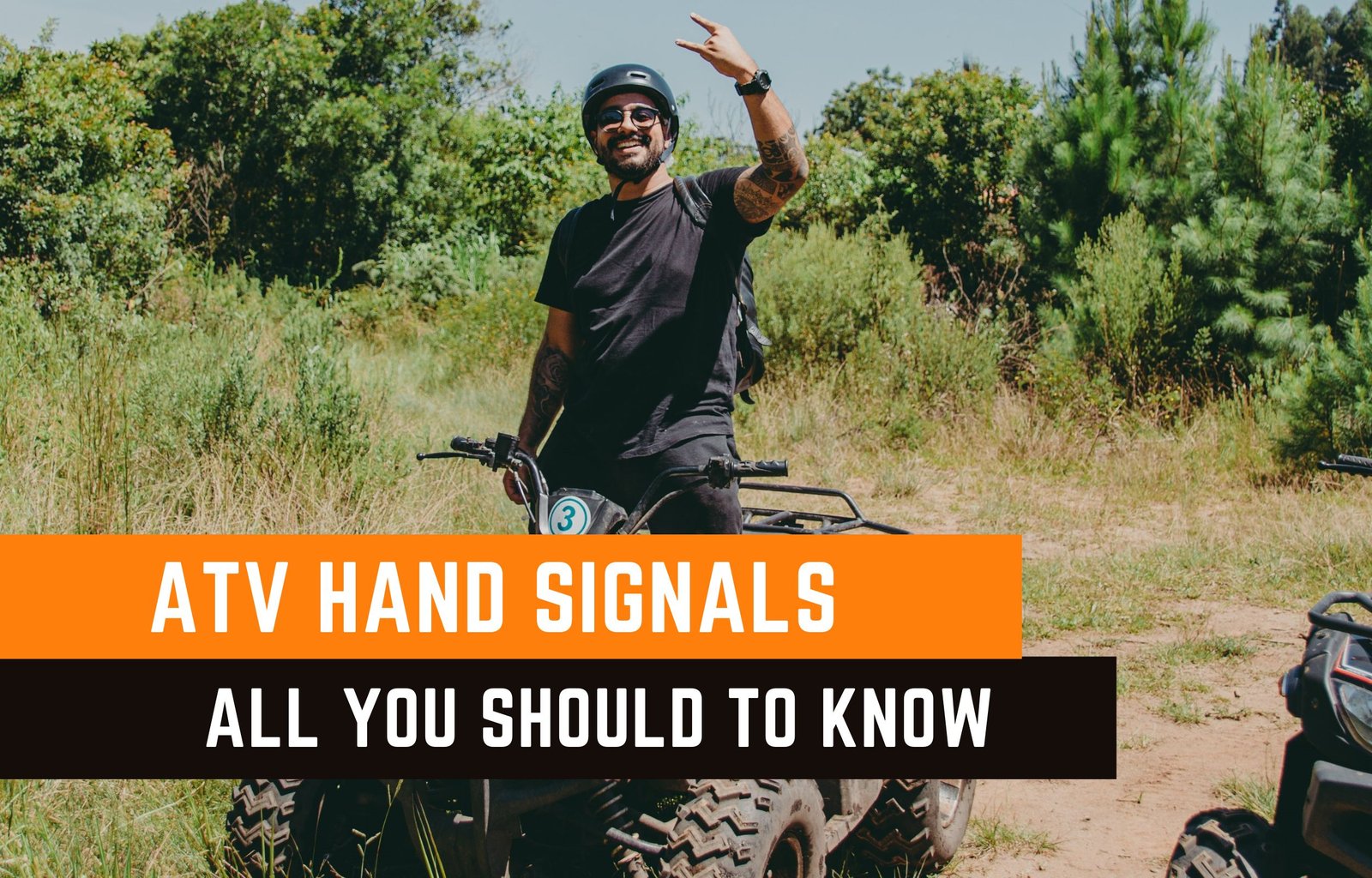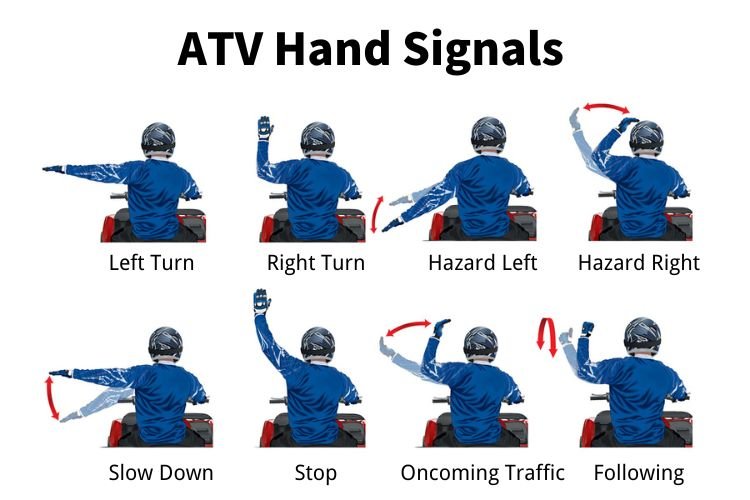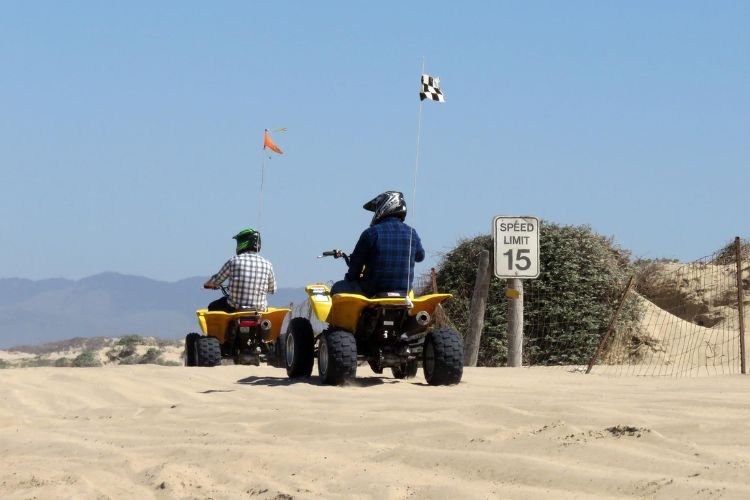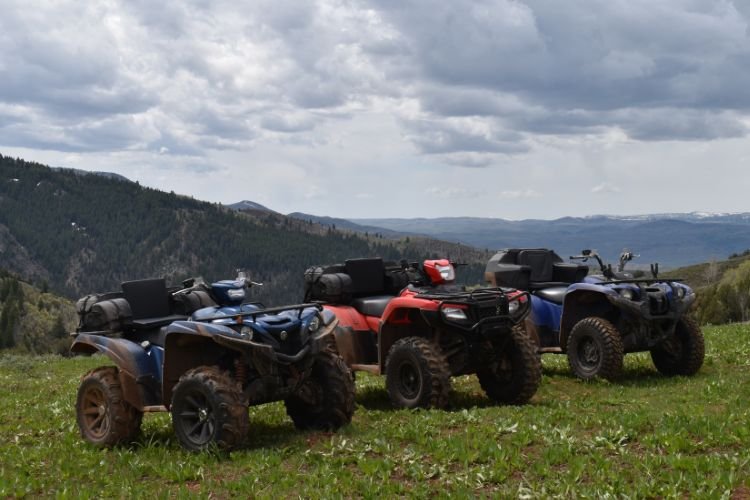Fodsports FX 60C vs FX30C Pro: What's new techs are the FX 60C bringing to us? Fodsports is a brand worth-mention for helmet communication and video recording. This brand has established itself as a key player with its innovative Bluetooth camera intercom systems. Recently, Fodsports has released a new camera intercom, the FX 60C. How […]

ATV Hand Signals: All You Should To Know 2023
Riding an ATV on the trails is an exhilarating experience. It's an exciting method to take a trip as well as to explore nature. If you're new to ATVing it is necessary to familiarize on your own with safe methods for trail riding, to ensure everybody on the path has a secure and pleasurable tour.
To be as visible and also safe as feasible on the trails, ATV riders usually wear high eye-catching cloth, switch on headlights and taillights, and also use ATV hand signals. It's important to communicate where you are going when you are riding, and also using hand signals is a reliable method to make others understand where you are going on the routes.
By making certain movements with one arm while steering with the other, you can tell other riders and pedestrians where you are going. Before you hit the road, familiarize yourself with these basic hand signals to ensure your safety.
Table of Contents
What ATV Hand Signals Should You Know?
The ATV hand signals we will explain are common and generally accepted in all motor vehicles that do not have turn signals. This knowledge will be useful in any situation, and it is a useful skill to have.
Even if you do not possess a motorbike or an ATV, opportunities are you will run into one at some time. It could, at the most, conserve somebody's life (including yourself) by recognizing ATV hand signals! Let's wish never ever meets that situation, though. Most importantly else, it's something rather cool to recognize your way around.
Team riding requires clear interaction, and also understanding just how to make use of hand signals is the very best way to obtain a message to various other riders.

Source: www.offroad-ed.com (hand signals for ATV)
Know the meaning of these hand signals:
- Stop: Extend your left arm straight up with your palm open to indicate you are stopping.
- Slow Down: To show other riders that you are decelerating, extend your left arm and lean down slightly, rotating it up and down (it looks like you are petting a dog's head).
- Left Turn: By holding your left arm straight out so that it is parallel to the ground, you will indicate to other riders that you are turning left.
- Right Turn: By extending your left arm outward at a 90-degree angle and opening your palm, you will indicate that you are turning right.
- Oncoming Traffic: If another trail user approaches, pat the top of your head with an open palm to let the rider behind you know that traffic is about to pass.
- Traffic Behind: If traffic is approaching your group from behind, you can allow the various other riders to know by aiming behind your device, keeping your hand closed as well as pointing with your thumb.
- Hazard Ahead: To signal other riders to an obstacle or threat ahead on the route, extend your left arm straight out in front of you and with a shut clenched fist, point as clearly as feasible to the location of the danger.
An extra signal, when someone taps the top of their head, it means there's a law enforcement officer ahead. This is your signal to slow down and prepare to take a different path or take off your helmet and talk to them. (By the way, as a courtesy, you should take off your helmet when talking to anyone on the road.)
For all signals, use your left arm, besides making a right-hand turn.
ATV rides are a good way to spend a wonderful time with family and friends. It's a community event, so make sure you keep everyone in mind!
ATV Hand Signals In Group Riding
On group trips, ATV riders use a finger numbering system to inform those coming close how many ATVs are still behind. When the leader holds up 5 fingers, it implies that 5 or more riders are approaching.
In this example, there are 6 ATV riders traveling in a group. The leader will slow down and hold up 5 fingers when approaching an oncoming vehicle. This will inform the oncoming vehicle that there are 5 or more riders approaching behind them. Each rider will keep the number of riders remaining (4, 3, 2, 1) until they are safely through. Finally, the last rider in the group will raise their fist to indicate that they are the last ATV rider in the group.
Using these guidelines when using ATVs on trails is critical to responsible riding. Always be respectful of other trail users, slow down when approaching, obey posted speed limits and follow municipal bylaws.

Leader Is Important In Group Riding
The leader of a group of ATV riders assumes some essential responsibilities for the safety of the rest of the team. Particularly, the leader is responsible for watching the road for obstacles and oncoming riders, alerting them by passing back to the line with hand signals. This is why when you are on the road with a large group of people, ideally each rider should be able to see the rider in front of them and the rider behind them, even if the riders in front and behind them are some distance apart.
Other duties of the leader consist of:
- Choose a route that suits each individual's skill level
- Navigate and take note of landmarks
- Keep track of all riders and make sure everyone is in the group
- Choose when to stop for a break
For a group with mixed ATV riding experience, ATV helmet communication systems can make a leader's job easier. These wireless communication devices make it easy to communicate with other members of the group. If you think that's a lot of overhead, then you can check out Best Budget ATV Helmet Communication Systems: Under $100!.
The most cost-effective ATV helmet communication system such as the Fodsports intercom may be your best choice, and it offers the hands-free voice-command operation, allowing you to chat, alert other riders to obstacles, and even play music without taking your hands off the bars.

Respect the landscape While Riding
Remember that valuing the natural surroundings is one of the primary factors that individuals enjoy off-road riding-- so respect that atmosphere in every method you can:
- Do not harm plants and also landscape design by riding off the path.
- Anytime you see wildlife as well as livestock give them a wide berth. Animals are unpredictable and also the sound of our machines will alarm them every so often.
- If possible, use the ATV on a four-wheel-drive rather than two wheels on the trail. Using a two-wheel drive may damage trail conditions by creating ruts in the trail due to excessive tire rotation.
- Don't clutter, as well as if you see trash choose it up. On the excursions, carry a trash bag in one of the vehicles, don't offer cyclists a bad name please.
Break During The Trail Riding
It is necessary to take periodic breaks when trail riding. A break about every hour provides every person a possibility to hydrate, eat a treat and also stretch their legs, and also gives the leader the chance to take stock of the group and ensure that nobody is missing out on or wounded. Some riders like to relax 15 minutes after the beginning of the ride to address any major gear issues before the group gets too far from home plate.

Conclusion
No matter where you're riding or who you're riding with, complying with ATV path rules will aid make everyone's ride better. If you're uncertain of the proper etiquette when heading out for a trip, ask a good friend that's experienced in off-roading, and make sure to inspect the path's specific directions prior to you going out.
You may also interested:
16 Essential Motorcycle Hand Signals You Should Know
Unleashing the Thrill: A Comprehensive Guide to ATV Camping Adventures
ATV Safety Tips: Your Ultimate Guide to Safe Riding

Rodney L is a technical writer and product consultant with over a decade of experience in the motor industry. Rodney is a fan of performance machines that run fast and loud and an expert in all things custom. His numerous articles and write-ups are available at our knowledge base. Whether it’s something wrong with your motorcycle or you are building a custom bike, you can trust Rodney’s experience.
The Fodsports FX 60C is leading a revolution in the Bluetooth camera intercoms market. This 2025 newest intercom with camera by Fodsports is designed to enhance your riding experience. This device comes with advanced features like Bluetooth 5.4, 4K HD recording, 10-way intercom, and plenty more. So it is clear that this device seamlessly blends […]
For motorcycle riding safety, effective stopping rocks because it has an influence on how fast you stop how stable you are, and how much control you get. Figuring out when and how to use the front and back brakes can really bump up your riding game and keep you safe. This guide is gonna show […]
As the electric vehicle Revolution accelerates the world of motorcycles, is no exception To be a landmark year for electric motorcycles with Cutting Edge. Technology, performance, and design advancements reshape the market. Electric motorcycles. Now, offers impressive, power, extended range, and Sleek designs. Whatever you need, the options in 2025 are more diverse and exciting […]
Motorcycle enthusiasts are a dedicated group. They enjoy the sense of liberation on the open highway, the excitement of riding, and the opportunity to display their beloved two-wheeled machines. But in today’s world, there’s a new debate revving up in the motorcycle community: gas vs. electric motorcycles. If you're an experienced rider or a beginner […]
Shopping for a motorcycle enthusiast can be tricky, especially if you’re not familiar with the gear and gadgets that make riding more enjoyable. Whether it’s the thrill of the ride, the joy of the open road, or the love for motorcycles themselves, finding the perfect Christmas gift can feel overwhelming. Here is a guide of […]


Great blog! The clear explanations and visuals make understanding ATV hand signals easy and essential for safe riding.